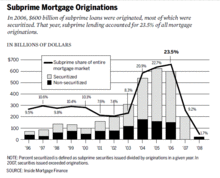The standard loan is a falling debt, rising equity loan, while the reverse mortgage is a falling equity, rising debt loan. Simply put, as you pay on a standard loan, the amount you owe is lowered and for that reason the equity you have in the home increases gradually.
There is a secret here that I am going to let you in on. 2. There is never a payment due on a reverse mortgage and there is likewise no prepayment charge of any kind. In other words, you can make a payment at any time, up to and consisting of payment in full, without charge.
The quantity loaned in a reverse mortgage is figured out differently than a basic home loan. You do not hear individuals talking about the "loan-to-value ratio" like you would on a conventional loan. On a traditional loan, the lending institution accepts provide a set amount that is determined as a portion of the worth of the house.
The age of the youngest borrower, value of the house or the HUD lending limitation (whichever is less) The rate of interest in effect at the time Costs to obtain the loan (which are deducted from the Principal Limit) Existing mortgages and liens (which need to be paid in complete) Any remaining cash comes from you or your heirs.
The older you are when you take out a reverse home loan, the more you will receive under the program based on the HUD calculator. You need to be at least 62 years of age for a reverse home loan. The Principal Limitation of the loan is identified based upon the age of the youngest borrower due to the fact that the program uses actuarial tables to determine for how long customers are most likely to continue to accrue interest.
Not known Factual Statements About How Exactly Do Mortgages Work
Of course there will always be exceptions, but the premise is that a 62-year-old debtor will have the ability to accrue a lot more interest over his/her life than an 82-year-old customer with the very same terms, so the HUD calculator allows the 82-year-old borrower to begin with a greater Principal Limitation.
In addition to these alternatives, they can use a modified variation of each and "blend" the programs, if you will. For example, a customer born in 1951 who owns outright a $385,000 house may choose it is time to get a reverse home mortgage. Why? The borrower desires $50,000 at near make some modifications to the home and to money a college prepare for her grandchild.
She can take a customized term loan with a $50,000 draw at closing and set up the month-to-month payment for 4 years of $1,000 each month. That would leave her an additional $107,000 in a line of credit that she would have readily available to utilize as she pleases. explain how mortgages work. If she does not utilize the https://penzu.com/p/6e5a3c6a line, she does not accrue interest on any funds she does not use and the on the unused part.
Let us look at the $200,000 credit line revealed above. As we discussed, lots of people utilized to consider the reverse home loan a last resort. However let us think about another debtor who is a savvy planner and is planning for her future requirements. She has the income for her present needs but is concerned that she may need more money later.
Her credit line grows at the exact same rate on the unused part of the line as what would have accrued in interest and had she obtained the cash - how do balloon mortgages work. As the years pass, her credit line boosts, implying if she one day needs more funds than she does now, they will be there for her (how mortgages work canada).
The Best Guide To Reverse Mortgages How They Work

If rates of interest go up 1% in the third year and another percent in the 7th, after 20 years her offered line of credit would be more than $820,000. Now of course this is not income, and if you do obtain the cash you owe it and it will accumulate interest.
But where else can you guarantee that you will have between $660,000 and $800,000 offered to you in twenty years? The calculator is shown below, Go to this website and you can see the extremely modest rate boosts utilized. If the accrual rates increase more the development rate will be greater. The needs you to take mcdowell and walker sidney a swelling amount draw.
You can not leave any funds in the loan for future draws as there are no future draws allowed with the fixed rate. The factor for this is due to the fact that of the growth of the line. As you can see the development rate can be quite significant and if there were lots of borrowers with yet unused funds who borrowed at low repaired rates however desired to lastly access their funds years later on after rates had actually risen, customers would have significantly higher funds offered to them at rates that were not offered and might not have the ability to cover the demand of listed below market requests for funds.
Considering that debtors experienced a much greater default rate on taxes and insurance when 100% of the funds were taken at the preliminary draw, HUD changed the approach by which the funds would be readily available to borrowers which no longer enables all customers access to 100% of the Principal Limitation at the close of the loan.
HUD calls these needed rewards "obligatory obligations. You have access to as much as 100% of their Principal Limit if you are utilizing the funds to purchase a house or to pay compulsory responsibilities in conjunction with the transaction. You can also consist of up to 10% of the Principal Limit in money (as much as the maximum Principal Limitation) above and beyond the necessary responsibilities if needed so that you can still get some money at closing.
How Do Uk Mortgages Work Things To Know Before You Buy
If you have a $100,000 Principal Limit and no loans or liens on your house, you can take up to 60% or $60,000 of your profits at closing or any time in the first 12 months of the loan. You can access the staying $40,000 any time. This is where the fixed rate loan begins to impact customers the many.
In other words, per our example, as a set rate borrower you would get the $60,000, but because the repaired rate is a single draw there would be no additional access to funds. You would not, for that reason, be able to get the additional $40,000 and would forfeit those funds. If you were using the entire $100,000 to pay off an existing loan, either program would work similarly well since all the cash would be required to pay off the obligatory obligation (meaning the existing loan) which HUD permits.
Especially if you have a loan that you are settling. There is typically space in the worth of the loan for the lending institution to make back money they invest on your behalf when they offer the loan. Lending institution credits are permitted by HUD. Look around and see what is available.
